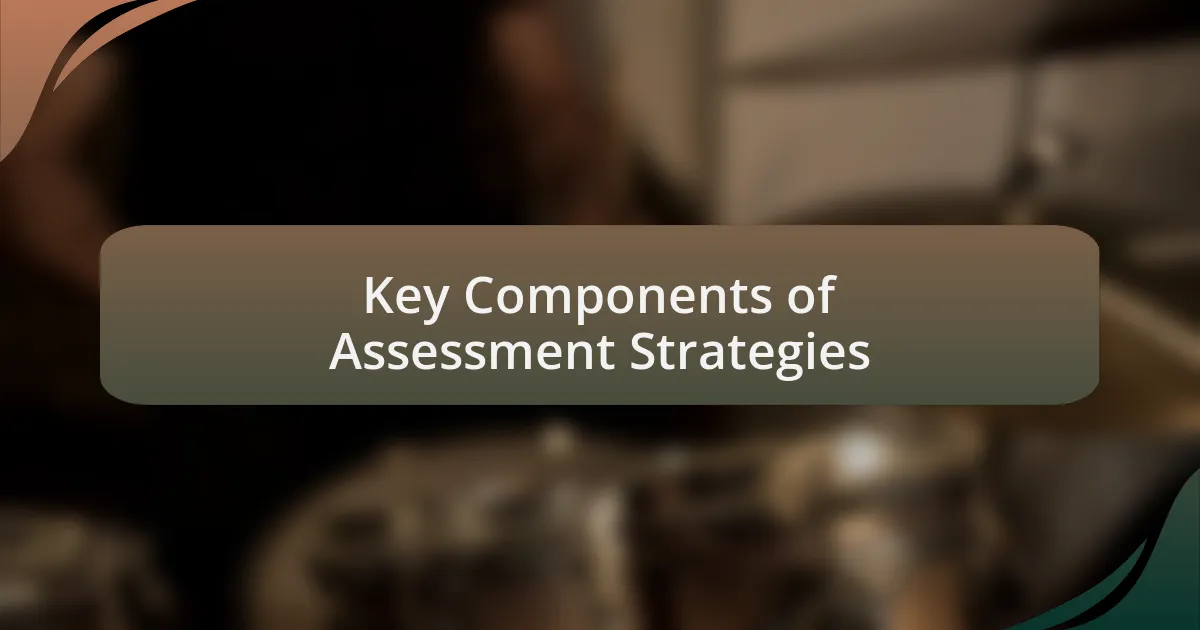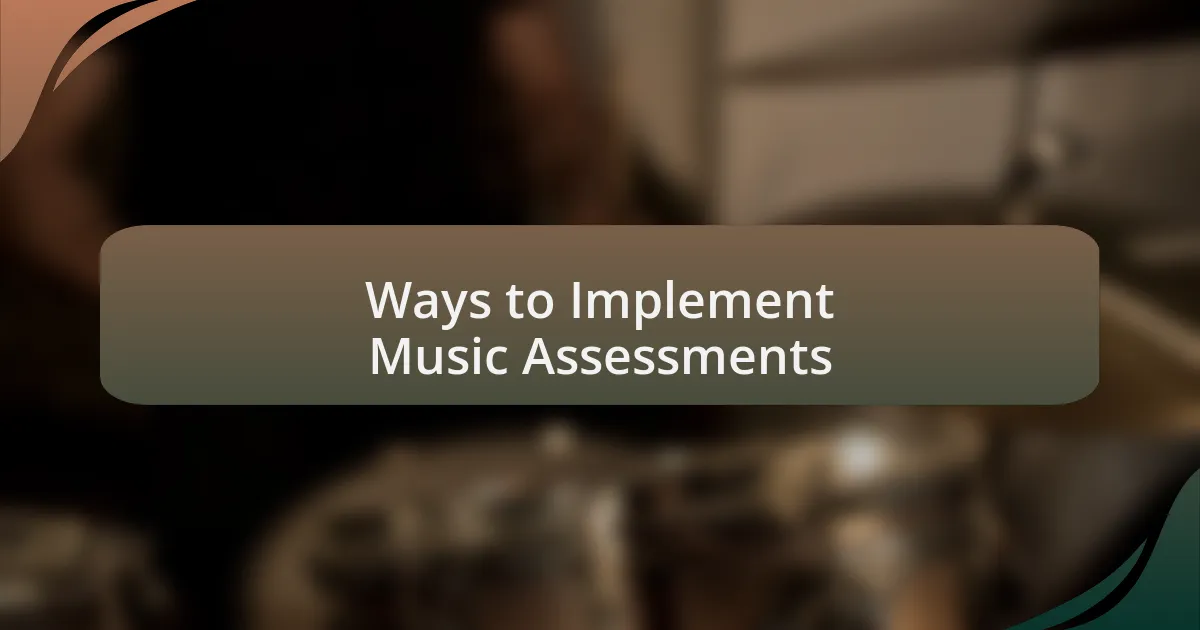Key takeaways:
- Alignment between assessments and learning objectives is essential for clarity and relevance in music education.
- Incorporating both formative and summative assessments, along with timely feedback, promotes continuous growth and reflection.
- Creating tailored rubrics and integrating technology enhances student engagement and understanding of expectations.
- Allowing student choice in assessments fosters ownership, enthusiasm, and deeper connections to their learning.

Key Components of Assessment Strategies
One of the most vital components of assessment strategies in music education is the alignment between assessments and learning objectives. For instance, when I crafted assignments for my students, I always made sure that each task clearly reflected what they were meant to learn. This alignment not only provides clarity but also ensures that students can see the relevance of their work, don’t you think?
Another key element is the use of both formative and summative assessments. I often incorporated informal assessments, like peer feedback during rehearsals, alongside more formal evaluations, such as final performances. This blend allows for continuous growth and reflection; after all, isn’t the journey of learning just as important as the end result?
Finally, providing timely and constructive feedback can significantly enhance student learning. I remember a time when I offered detailed feedback on a student’s composition and saw them light up with understanding. That moment reminded me how crucial it is to offer insights that guide students on their musical journey. Feedback shouldn’t just point out what needs improvement; it should celebrate progress and inspire further exploration.

Ways to Implement Music Assessments
In implementing music assessments, I find that creating rubrics tailored to specific tasks can be incredibly beneficial. When I developed a rubric for a group performance project, it became easier for my students to understand what was expected of them. I noticed that this clarity not only motivated them but also sparked discussions about their roles in the ensemble. Hasn’t it been fascinating to see how structured guidelines can empower creativity?
In my experience, integrating technology into assessments has made a significant impact on student engagement. For example, when I introduced software for self-recordings, students became excited about the chance to evaluate their own performances. Listening back to their work generated insightful conversations about pitch and rhythm, reinforcing the idea that self-reflection is a natural part of growth in music. Have you ever wondered how much more effective assessments could be with such tools?
Additionally, I believe that incorporating student choice into assessments fosters ownership of their learning. I once allowed my students to select their own pieces for a midterm project, and the shift in their enthusiasm was palpable. They connected more deeply with their music and, in turn, their assessments showcased not just skills but genuine passion. Isn’t it amazing how giving students a voice in their learning can transform their educational experience?

Tips for Enhancing Music Assessments
One tip that has greatly enhanced my assessments is providing timely and constructive feedback. I once struggled with giving detailed feedback at the end of a term, which often left students confused about how to improve. Shifting to a model where I offered feedback after each performance sparked a commitment to growth among my students. Have you noticed how much more eager learners become when they feel supported in their journey?
Creating collaborative assessment opportunities has also proven to be invaluable. When I set up peer evaluation sessions, the dynamics completely shifted in the classroom. Students started to have meaningful discussions about each other’s performances, which not only built camaraderie but also deepened their understanding of musical concepts. Don’t you find it rewarding to see students become each other’s teachers?
Lastly, I wholeheartedly advocate for incorporating self-assessment techniques. I remember a time when I introduced reflection journals alongside performance evaluations, and the results were phenomenal. Students became more self-aware, identifying areas for improvement that I might have missed. Isn’t it incredible how encouraging students to take an honest look at their own progress fosters a sense of accountability and ownership?